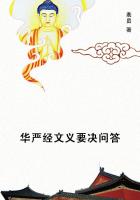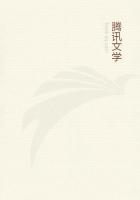As a paroxy** came on the man was in the habit of gently pressing and holding the arm closely to his body. At one time he endured the attack in a standing posture, walking the floor, but usually he seated himself very near a hot stove, in a doubled-up, cramped position, utterly unmindful of all surroundings, until the worst pain had ceased. Frequently he was unable to control himself, calling out piteously and vehemently and beseeching that his life be terminated by any means. In desperation he often lay and writhed on the floor in agony. The intense suffering lasted, as a rule, for about a half hour, but he was never without pain of the neuralgic type. He was freer of pain in summer than in winter.
Exsection of the brachial plexus was performed, but gave only temporary relief. The man died in his eighty-fourth year of senile debility.
According to Osler the tubercula dolorosa or true fascicular neuroma is not always made up of nerve-fibers, but, as shown by Hoggan, may be an adenomatous growth of the sweat-glands.
Yaws may be defined as an endemic, specific, and contagious disease, characterized by raspberry-like nodules with or without constitutional disturbance. Its synonym, frambesia, is from the French, framboise, a raspberry. Yaws is derived from a Carib word, the meaning of which is doubtful. It is a disease confined chiefly to tropical climates, and is found on the west coast of Africa for about ten degrees on each side of the equator, and also on the east coast in the central regions, but rarely in the north. It is also found in Madagascar, Mozambique, Ceylon, Hindoostan, and nearly all the tropical islands of the world.
Crocker believes it probable that the button-scurvy of Ireland, now extinct, but described by various writers of 1823 to 1857 as a contagious disease which was prevalent in the south and in the interior of the island, was closely allied to yaws, if not identical with it. The first mention of the yaws disease is by Oviedo, in 1535, who met with it in San Domingo. Although Sauvages at the end of the last century was the first to give an accurate description of this disease, many physicians had observed it before.
Frambesia or yaws was observed in Brazil as early as 1643, and in America later by Lebat in 1722. In the last century Winterbottom and Hume describe yaws in Africa, Hume calling it the African distemper. In 1769 in an essay on the "Natural History of Guiana," Bancroft mentions yaws; and Thomson speaks of it in Jamaica. Hillary in 1759 describes yaws in Barbadoes; and Bajou in Domingo and Cayenne in 1777, Dazille having already observed it in San Domingo in 1742.
Crocker takes his account of yaws from Numa Rat of the Leeward Islands, who divides the case into four stages: incubation, primary, secondary, and tertiary. The incubation stage is taken from the date of infection to the first appearance of the local lesion at the sight of inoculation. It varies from three to ten weeks. The symptoms are vague, possibly palpitation, vertigo, edema of the limbs and eyelids. The primary stage begins with the initial lesion, which consists of a papule which may be found most anywhere on the body. This papule ulcerates. The secondary stage commences about a fortnight after the papule has healed.
There is intermittent fever, headache, backache, and shooting pains in the limbs and intercostal spaces, like those of dengue, with nocturnal exacerbations. An eruption of minute red spots appears first on the face, and gradually extends so that the whole body is covered at the end of three days. By the seventh day the apex of the papule is of a pale yellow color, and the black skin has the appearance of being dotted over with yellow wax. The papule then develops into nodules of cylindric shape, with a dome-shaped, thick, yellow crust. It is only with the crust off that there is any resemblance to a raspberry. During the month following the raspberry appearance the skin is covered with scabs which, falling off, leave a pale macula; in dark races the macula becomes darker than normal, but in pale races it becomes paler than the natural skin, and in neither case is it scarcely ever obliterated. Intense itching is almost always present, and anemia is also a constant symptom. The disease is essentially contagious and occurs at all ages and among all ***es, to a lesser degree in whites and hybrids, and is never congenital. It seems to have a tendency to undergo spontaneous recovery.
Furunculus orientalis, or its synonyms, Oriental boil, Aleppo boil, Delhi boil, Biskra button, etc., is a local disease occurring chiefly on the face and other uncovered spots, endemic in limited districts in hot climates, characterized by the formation of a papule, a nodule, and a scab, and beneath the last a sharply punched-out ulcer. Its different names indicate the districts in which it is common, nearly always in tropical or subtropical climates. It differs from yaws in the absence of febrile symptoms, in its unity, its occurrence often on the feet and the backs of the hands, its duration, and the deep scar which it leaves. A fatal issue is rare, but disfiguring and disabling cicatrices may be left unless great care is employed.
Pigmentary Processes.--Friction, pressure, or scratching, if long continued, may produce extensive and permanent pigmentation. This is seen in its highest degree in itching diseases like prurigo and pityriasis. Greenhow has published instances of this kind under the name of "vagabond's disease," a disease simulating morbus addisonii, and particularly found in tramps and vagrants.
In aged people this condition is the pityriasis nigra of Willan.















